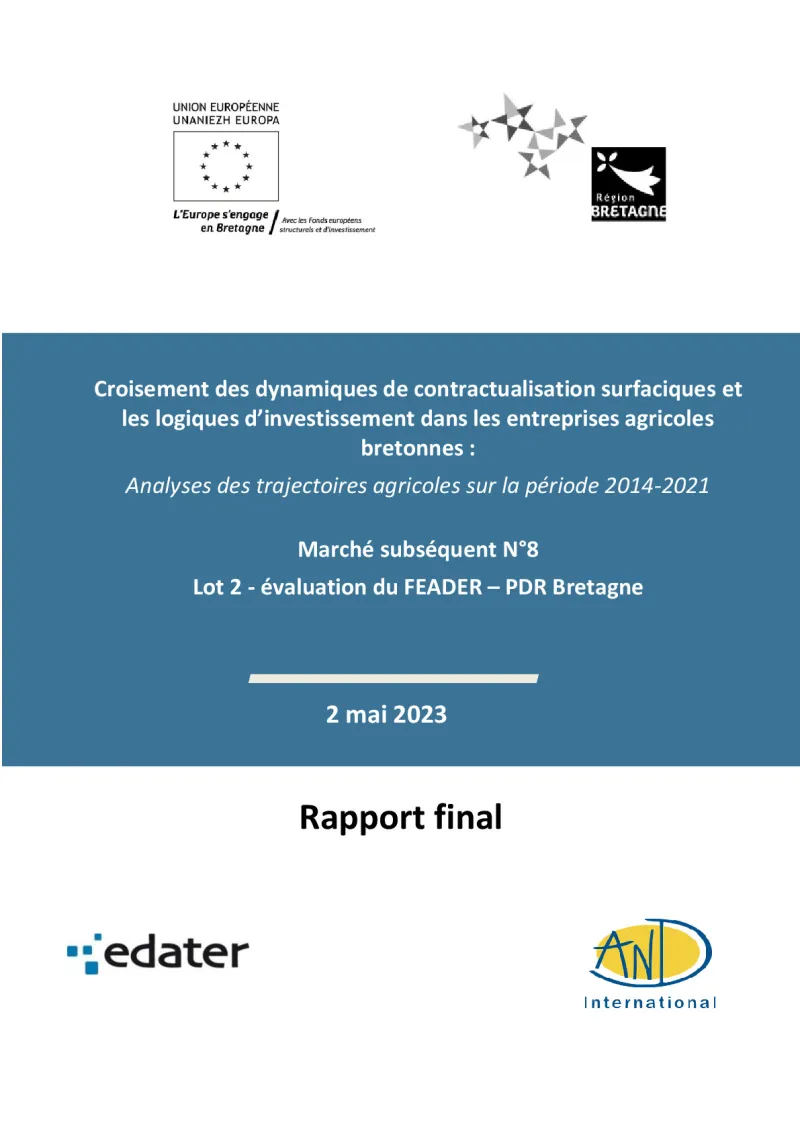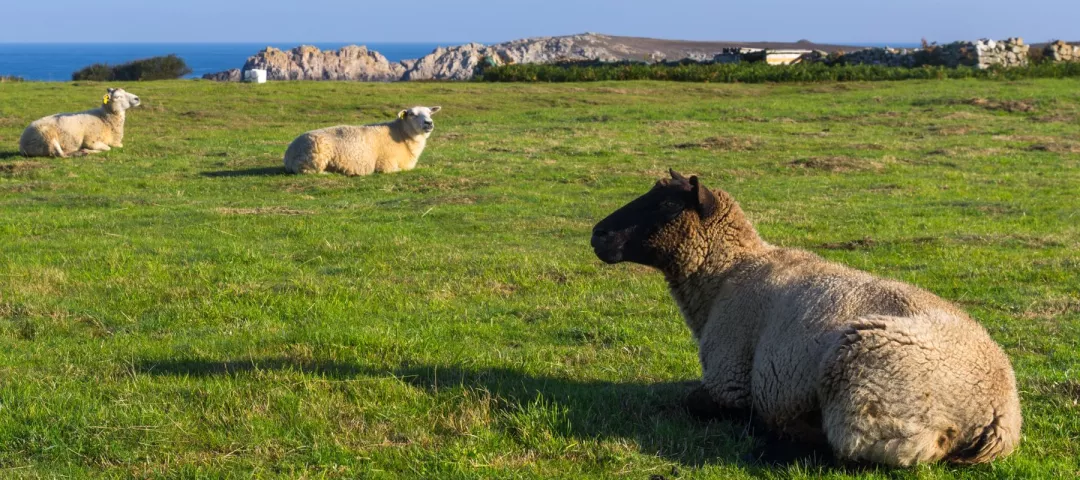Intersection of dynamics and investment logics in Breton agricultural enterprises: Analyses of agricultural trajectories 2014-2021
The evaluation analyses changes in the trajectories of farms from 2014 to 2021 and the extent to which the combination of organic farming and investment measures impacts the trajectories of farms in terms of implementing more environmentally virtuous practices.
- France
- 2014-2022
- Socio-economic impacts


The final report, published in 2023, highlights the evaluation carried out in the region of Bretagne over 12 months between 2022 and 2023, analysing agricultural trends over the period 2014-2021.
The evaluation aims to analyse changes in the trajectories of farms over a long period (from 2014 to 2021) and to analyse the extent to which the combination of AECMs, measures to promote organic farming and investment measures have an impact on the trajectories of farms in terms of the implementation of more environmentally virtuous practices. The study focuses on four key Breton industries: dairy cattle, pork, eggs, and vegetables.
The evaluation is based on 4 evaluation questions relating to 3 evaluation criteria: relevance, effectiveness, and coherence (see below). In terms of methodology, this assessment uses innovative tools. Firstly, the analysis of farming trajectories is based on the “theory of practices” used in sociology, which aims to analyse individual trajectories to introduce new practices. Quantitative and qualitative methods are used to analyse farm trajectories (in terms of the implementation of more environmentally virtuous practices) and the impact of the combination of surface area and investment measures on farm development. In terms of quantitative analysis, data from EAFRD funding was collected and analysed, in addition data from the 2010 and 2020 agricultural censuses. On this basis, indicators have been created to answer the evaluation questions by analysing the trend in terms of changes in farm trajectories. In addition to this data, an online survey was distributed to the beneficiaries of the measures. In addition to the quantitative analysis, a qualitative analysis was conducted to examine the causal links and factors producing the results. This qualitative analysis was based on qualitative interviews (with the Region's measure referents and regional professional structures) and case studies (covering 4 sectors: milk, laying hens, pork and vegetables).
The evaluation aims to answer 4 evaluation questions relating to relevance, effectiveness, and coherence:
- To what extent are the measures covered by this evaluation relevant to the issues identified in Bretagne and to the needs of stakeholders?
- To what extent have the measures covered by the evaluation influenced farm trajectories (changes in practices or changes in production systems)? What combinations of measures have had the greatest impact on these changes?
- To what extent are these changes sustainable? What factors (external factors, implementation, etc.) encourage or limit these changes in trajectory and their sustainability?
- To what extent are the various measures covered by the evaluation consistent (in terms of their objectives and implementation)?
In terms of limitations, there is a lack of data on certain variables (EAFRD monitoring data), which may have limited the analyses that could be carried out for the programming review. With regard to the conclusion drawn by the study, the evaluation highlights the impact of combining Agri-environment-climate Measures (AECM) and investment measures (positive qualitative feedback but no quantitative validation, particularly as the investments are not necessarily made with EAFRD support), as well as the clear links between the pursuit of new farming practices and the level of extensification (based on qualitative and quantitative analyses). More specifically, the evaluation found that AECM have greater positive impacts on extensification (increase pasture, decrease maise) of the beneficiaries in the milk sector. The evaluation also showed that AECM may be a « tipping point » for extensification at the farm level. In terms of coherence and relevance of the measures, the evaluation concludes that intervention were relevant regarding stakeholders needs, in a period of high changes (phasing out of milk quotas, « end the cage age » in the egg sector, environmental and energy transitions). Interventions were coherent in their objectives but there were limited connections in the implementation. Finally, while AECM aimed to the extensification, some investments tended to foster intensification (milking robots).
Author(s)
The evaluation was carried out under the coordination of the Managing Authority Région Bretagne, and carried out by AND International (AND-I) (Tanguy Chever, Clément Lepeule, Séverine Renault) and EDATER (Sébastien Guilbert, Thibault Clement, Valentin Bernard).
Resources
Documents
Final report of Crossing the dynamics of surface contractualization and investment logics in Breton farm businesses: Analysis of agricultural trajectories over the 2014-2021 period
(PDF – 3.64 MB – 100 pages)